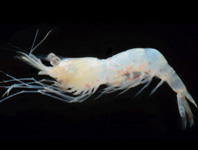Abstract
The territory of Pakistan has been influenced by biota from different geographic directions, and is divided zoogeographically into the Palearctic and Oriental regions (Khan 2006; Masroor 2012). This makes Pakistan one of the important territories in Eurasia in the understanding of past biodiversity dynamics. Well-known examples of Oriental elements among its amphibian fauna are observed in all four families of toads and frogs currently known from Pakistan: Bufonidae, Microhylidae, Megophryidae, and Dicroglossidae. In this short contribution, we focused on the species status and the origins of the genus Microhyla (Microhylidae), known from the north-eastern part (Punjab, Islamabad, and Azad Jammu and Kashmir; Masroor 2012) of the country. However, Sarkar (1984), also reported Microhyla from Bhuj in Gujarat, India, very close to the southern Pakistani province of Sindh. This genus has not yet been reported from the Palearctic region of the country and all currently known localities are from the Oriental parts of Pakistan (i.e. eastward of the Indus River). The genus is represented in the country by M. ornata (Duméril & Bibron, 1841), originally reported as Oxyglossus lima (Khan 1968). However, in view of the overall distribution and diversity of the genus based on genetic data (Garg et al. 2018, 2019; Gorin et al. 2020), it appears that populations from Pakistan could possibly have a different evolutionary history and be different taxon (see the currently scattered range of the genus between northern and western India and Pakistan; Fig. 1). Therefore, we tested this assumption using mitochondrial (mt) and nuclear (n) DNA data.
References
Garg, S., Das, A., Kamei, R.G. & Biju, S.D. (2018) Delineating Microhyla ornata (Anura, Microhylidae): Mitochondrial DNA barcodes resolve century-old taxonomic misidentification. Mitochondrial DNA Part B, 3, 856–861.
https://doi.org/10.1080/23802359.2018.1501286
Garg, S., Suyesh, R., Das, A., Jiang, J., Wijayathilaka, N., Thasun Amarasinghe, A.A., Alhadi, F., Vineeth, K.K., Aravind, N.A., Senevirathne, G., Meegaskumbura, M. & Biju, S.D. (2019) Systematic revision of Microhyla (Microhylidae) frogs of South Asia: a molecular, morphological, and acoustic assessment. Vertebrate Zoology, 69, 1–71.
https://doi.org/10.26049/VZ69-1-2019-01
Gorin, V.A., Solovyeva, E.N., Hasan, M., Okamiya, H., Suranjan Karunarathna D.M.S., Pawangkhanant, P., de Silva, A., Juhong, W., Milto, K.D., Nguyen, L.T., Suwannapoom, C., Haas, A., Bickford, D.P., Das, I. & Poyarkov, N.A. (2020) A little frog leaps a long way: compounded colonizations of the Indian Subcontinent discovered in the tiny Oriental frog genus Microhyla (Amphibia: Microhylidae). PeerJ, 8, e9411.
https://doi.org/10.7717/peerj.9411
Hall, T.A. (1999) BioEdit: a user-friendly biological sequence alignment editor and analysis program for Windows 95/98/NT. Nucleic Acids Symposium Series, 41, 95–98.
Hasan, M., Islam, M.M., Khan, M.R., Igawa, T., Alam, M.S., Djong, H.T., Kurniawan, N., Joshy, H., Sen, Y.H., Belabut, D.M., Kurabayashi, A., Kuramoto, A., Sumida, M. (2014) Genetic divergences of South and Southeast Asian frogs: a case study of several taxa based on 16S ribosomal RNA gene data with notes on the generic name Fejervarya. Turkish Journal of Zoology, 38, 389–411.
https://doi.org/10.3906/zoo-1308-36
Howlader, M.S.A., Nair, A., Gopalan, S.V. & Merilä, J. (2015) A new species of Microhyla (Anura: Microhylidae) from Nilphamari, Bangladesh. Plos One, 10, e0119825.
https://doi.org/10.1371/journal.pone.0119825
Khan, M. (1968) Amphibian fauna of District Jhang with notes on habits. Pakistan Journal of Sciences, 20, 227–233.
Khan, M.S. (1979) On a collection of amphibians from northern Punjab and Azad Kashmir, with ecological notes. Biologia, 25, 37–50.
Khan, M.S. (2006) Amphibians and reptiles of Pakistan. Krieger Publishing Company, Malabar, Florida, 311 pp.
Khatiwada, J.R., Shu, G.C., Wang, S.H., Thapa, A., Wang, B. & Jiang, J.P. (2017) A new species of the genus Microhyla (Anura: Microhylidae) from Eastern Nepal. Zootaxa 4254, 221–239.
https://doi.org/10.11646/zootaxa.4254.2.4
Librado, P. & Rozas, J. (2009) DnaSP v5: A software for comprehensive analysis of DNA polymorphism data. Bioinformatics, 25, 1451–1452.
https://doi.org/10.1093/bioinformatics/btp187
Masroor, R. (2012) A contribution to the herpetology of northern Pakistan: The amphibians and reptiles of Margalla Hills National Park and surrounding regions. Society for the Study of Amphibians and Reptiles (SSAR), Ithaca, New York and Chimaira Buchhandelsgesellschaft mbH, Edition, Frankfurt, 217 pp.
Matsui, M., Ito, H., Shimada, T., Ota, H., Saidapur, S.K., Khonsue, W., Tanaka-Ueno, T. & Wu, G.F. (2005) Taxonomic relationships within the Pan-Oriental narrow-mouth toad Microhyla ornata as revealed by mtDNA analysis (Amphibia, Anura, Microhylidae). Zoological Science, 22, 489–495.
https://doi.org/10.2108/zsj.22.489
Posada, D. & Crandall, K.A. (2001) Intraspecific gene genealogies: trees grafting into networks. Trends in Ecology and Evolution, 16, 37–45.
https://doi.org/10.1016/S01695347(00)02026-7
Sarkar, A.K. (1984) Ecological studies on the amphibians of Gujarat. Bulletin Zoological Society India, 6, 87–93.
Thompson, J.D., Higgins, D.G. & Gibson, T.J. (1994) Clustal W: improving the sensitivity of progressive multiple sequence alignment through sequence weighting, position-specific gap penalties and weight matrix choice. Nucleic Acids Research, 22, 4673–4680.
https://doi.org/10.1093/nar/22.22.4673


